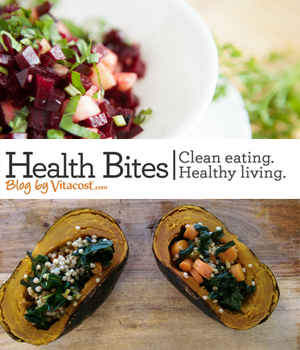Guest Post: Tips to Get Kids to Eat Fruit
My friend Stuart offered up a guest post on how to get kids to eat more fruit. I think this will work for picky eaters too, like my husband! We all know a picky eater or you may be one yourself. Read on for these great tips. Thanks Stuart!
I once heard someone say that kids will eat anything on a stick or in a special shape. Having two children who are picky eaters, I was determined to test this theory out. What I found was that for the most part, this is correct. I have also discovered that if you make fresh fruit easy and accessible—even if it’s not on a stick or in the shape of a star—kids will eat it.
At my kids’ school, every Friday is designated “Fresh Fruit Friday”. Parents sign-up and take turns bringing in fresh fruit (or veggies) for their children’s classroom each week. This not only encourages healthy eating in the schools, but also parent involvement in the classroom, which has been shown to be important to a child’s success in school.
When it’s my turn to bring in the fruit, I often try to make sure the fruit is accessible and easy for the teacher to hand out in the hopes that all the children—not just mine—will enjoy fresh fruit for snack that day. Here are a few of my favorites to prepare:
1. Fruit Kabobs. Again, it’s the stick thing. Arrange fruit on a stick and you automatically have single-portions ready for teachers to hand out.
Grapes are fun. You can alternate between green and purple grapes to add some color to your creation. You can do the same with melon, alternating between cantaloupe and honeydew.
Older kids will likely do fine with fruit on a skewer stick, but younger kids may prick themselves or their friends with the sharp pointed end. For my kindergartener’s class I use lollipop sticks to create the kabobs. You can find these sticks in most craft stores. I got mine at Michael’s.
2. Fruit Cups. My kids love berries. But, dumping a few packages of strawberries off in the classroom only adds to the burden of the teachers. They have to wash them and pass them around.
To avoid that I created mini fruit cups filled with strawberries, blueberries and grapes for each student. Admittedly, this was very time consuming, but when I heard my kids talk about how the kids loved them, it was well worth the effort.
3. Watermelon Slices. I don’t know a kid that doesn’t love watermelon, particularly as the weather gets warmer. Simply slice up the watermelon, put the slices in a bowl, and the kids and grab what they want. In my daughter’s kindergarten class, the kids sit at 3 different tables, so I separated the watermelon into 3 bowls and each table was able to eat it family style.
If you’re thinking “I don’t have time for this!” there are some easy options too. Remove grapes from the stem and put them in a bowl. When they’re off the stem, kids are more likely to reach for them. Or, just cut up banana slices. Again, if the kid doesn’t have to deal with the peel, eating a banana is so much easier.
Having a picky eater can be frustrating, I know. But, with a few tricks, you may have them eating something healthy. After all, fruit on a stick is better than no fruit at all.
This article is written by + Stu Lieberman the writer for Nutri-Health.com, an online High Quality Probiotics and Health Store. Assisting people and helping them find quality natural health supplements and digestive enzymes is what Stu has been doing for over 2 years. Nutri-Health.com carries Digestive Supplements to Probiotics to Joint Health.


